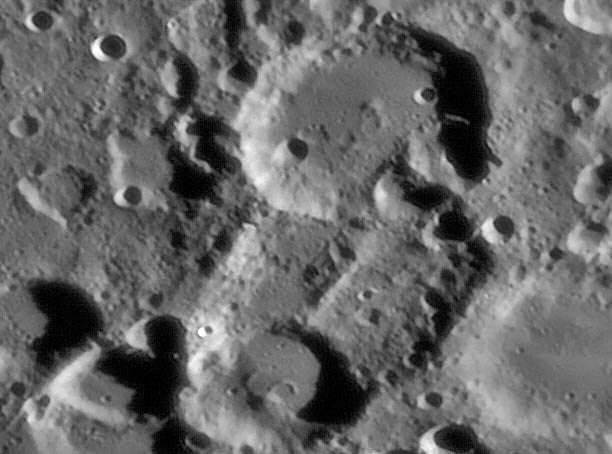February 10, 2016
Ridgeback Crater
Originally published April 16, 2005
Image Credit: Paolo Lazzarotti |
|
Ridgeback Crater Strange craters attract attention because they have a more complex history than conventional craters. For such odd craters something happened in the impact process or in later modifications to impart weirdness. Heraclitus qualifies as a strange crater. It is overlapped by younger craters to its north (Licetus) and south (Heraclitus D), and a dozen or more smaller craters lie within it. The most obvious feature that makes Heraclitus odd is the long ridge that runs through its center. But for further oddness look at its rim. To the SE the apparent rim is actually that of Cuvier, and only short curved sections to the NE and SW can be associated with Heraclitus. The NW rim is strong, but nearly straight. Matching its curvature with the proposed southern rim is impossible - the NW rim is part of a circle 150 or so kilometers wide. Is Heraclitus a crater or merely a collection of arcs that our eye magically connects? I think it is a real feature, but not a normal crater. The only thing on the Moon that is similar to its central ridge is the one (actually two) in Schiller. And Schiller is also elongated, as Heraclitus may be, judging by its straight northern rim. It is generally believed that Schiller formed by an oblique impact or series of simultaneous impacts. Perhaps that is also the origin of Heraclitus. What do you think? Technical Details: Related Links: Yesterday's LPOD: Back to the Pole Tomorrow's LPOD: Collapsing Mountain? |
|
Author & Editor: |
COMMENTS?
Register, Log in, and join in the comments.




